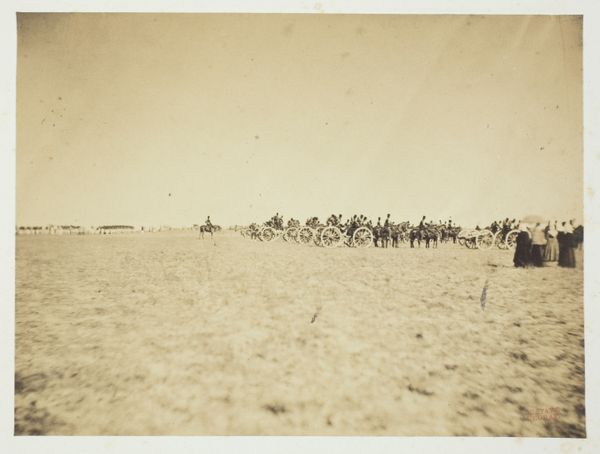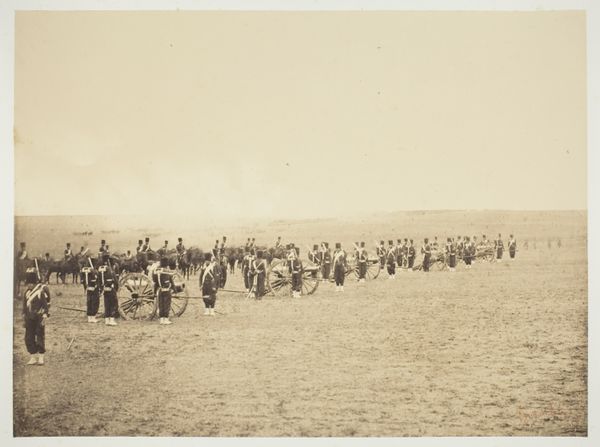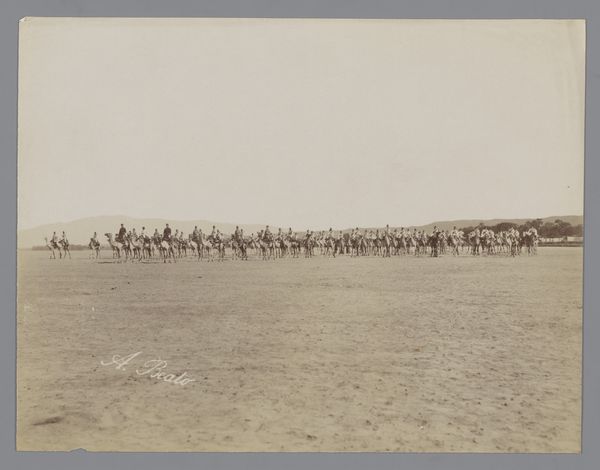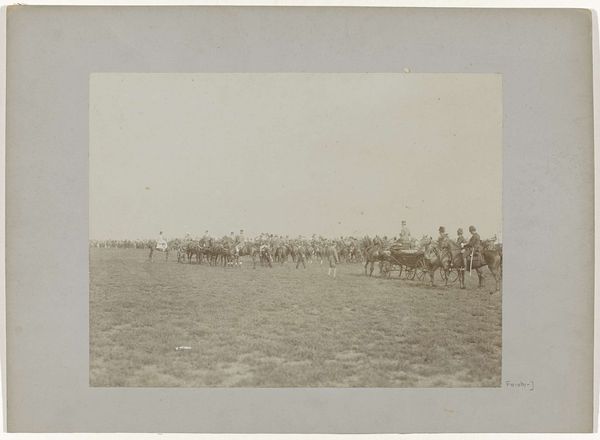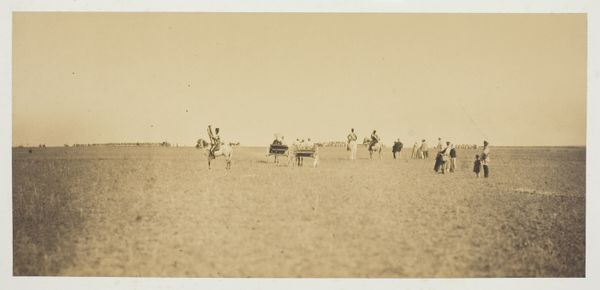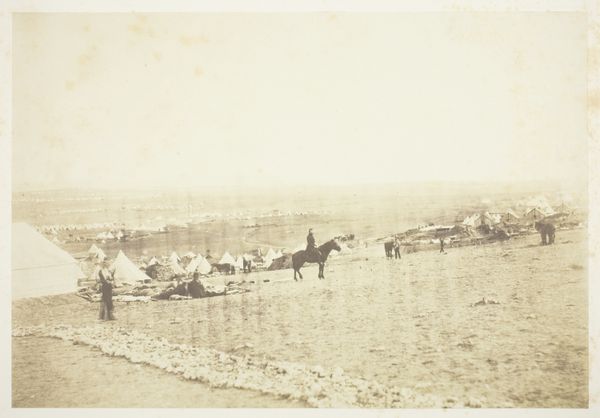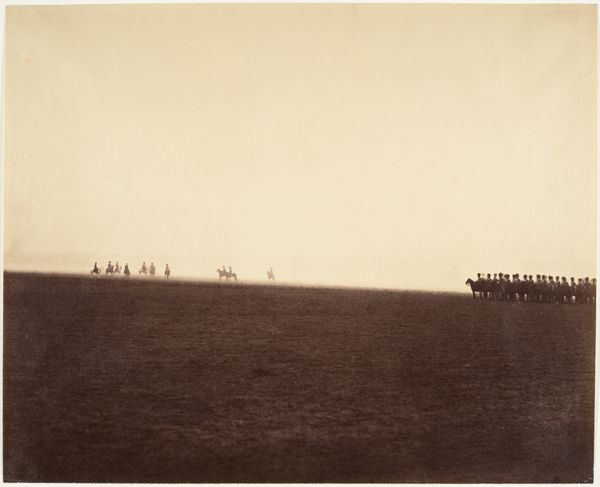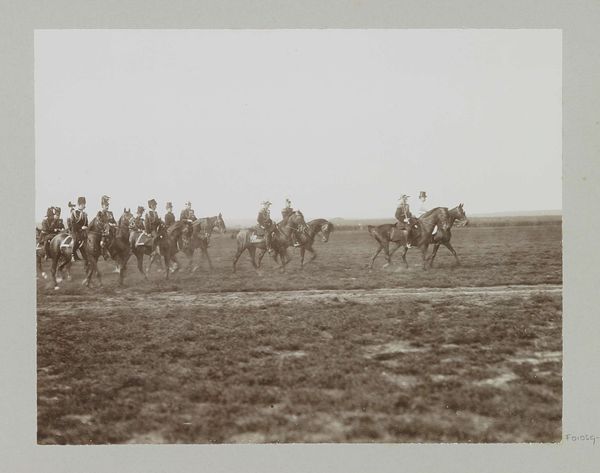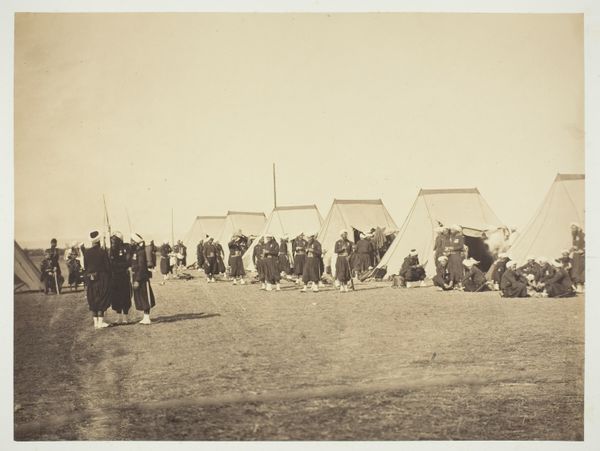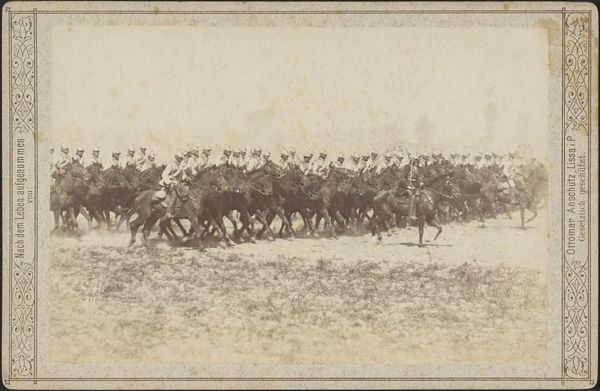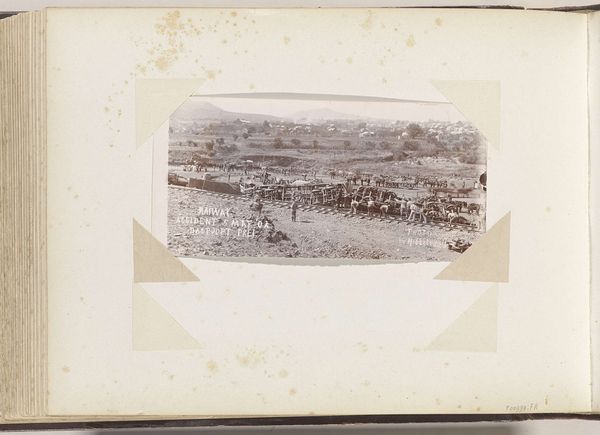
Dimensions: 13.4 × 17.9 cm (image/paper); 52.8 × 63.7 cm (album page)
Copyright: Public Domain
Editor: So, here we have an untitled landscape daguerreotype from 1857, by Gustave Le Gray. The scale makes it feel expansive, yet muted—almost melancholic. It depicts what appears to be a gathering of riders in a field. How would you interpret this work, focusing on its visual elements? Curator: Precisely. Considering the visual organization, one notes the stark horizontal division: earth and sky. The tonal range, largely sepia, offers a flattened picture plane, compressing depth. Consider the arrangement of figures: how their diminishing scale impacts your understanding of perspective, or even temporality? Is the interest narrative, or does the composition draw focus towards material conditions? Editor: It’s interesting how you point out the flattened picture plane, which feels very modern in a way. How do you see Le Gray using light here? It’s a photograph after all. Curator: Note the consistent, pervasive light; its impact on the values. This evenness subdues textural contrasts, and encourages visual processing towards the photograph’s physical materiality—its surface—rather than anecdotal reading. The very texture that defines the ground’s field recedes, becoming a zone, a mid-ground connecting base and the atmospheric upper register. Editor: So you are seeing the effect of light as more of a compositional tool, rather than representational? I think that is insightful! It makes me appreciate how much intention goes into a seemingly simple photograph. Curator: Exactly. Visual language invites a complex semiotic interplay. Looking beyond surface depiction allows a richer understanding of photographic agency.
Comments
No comments
Be the first to comment and join the conversation on the ultimate creative platform.
